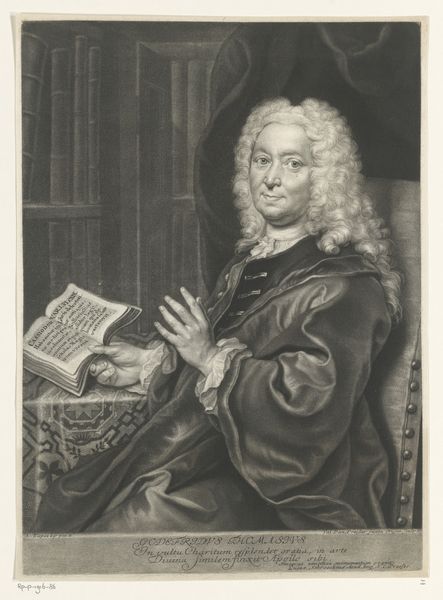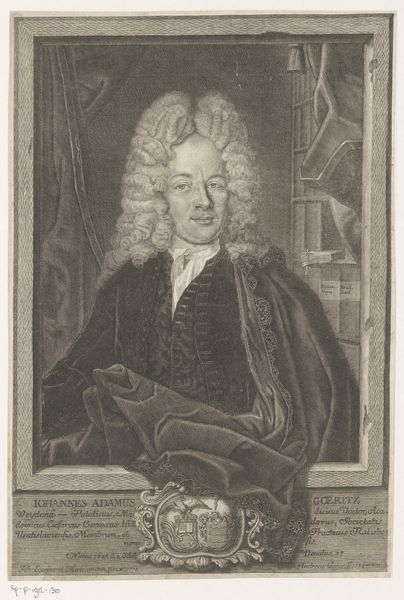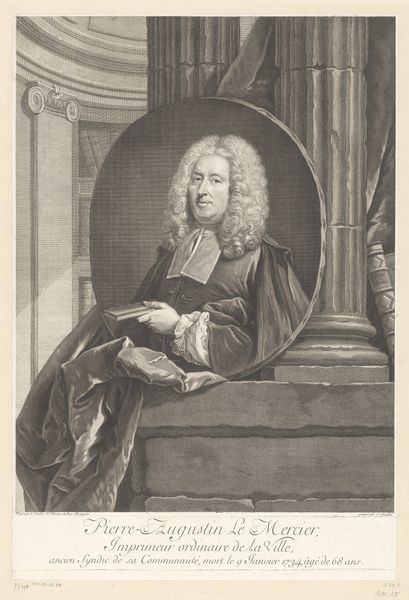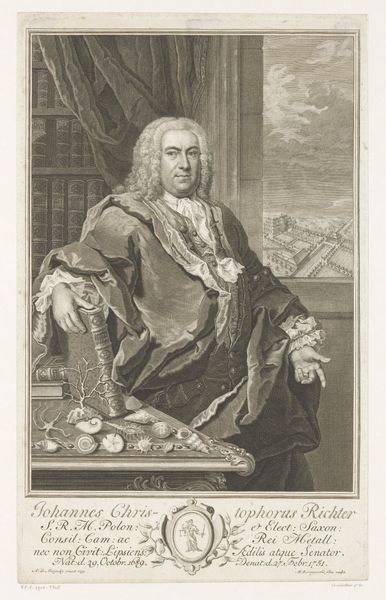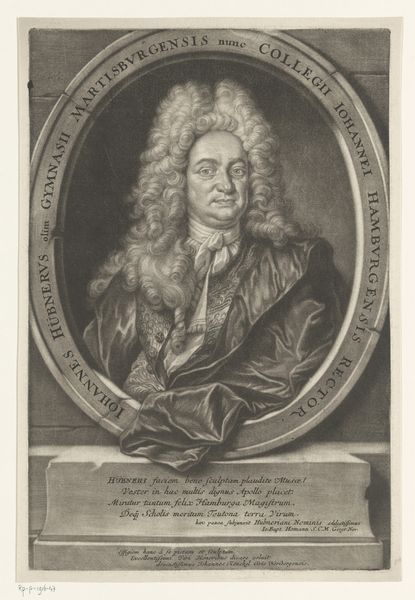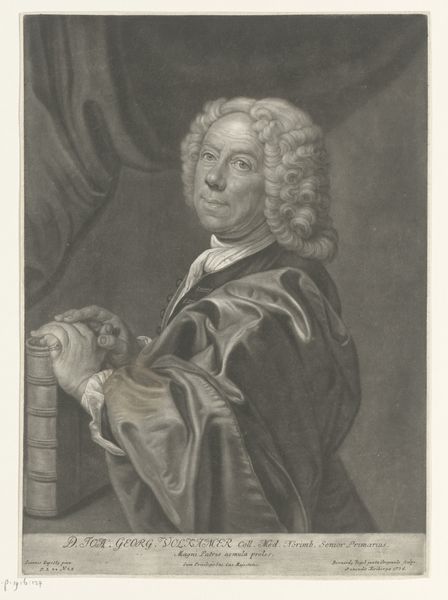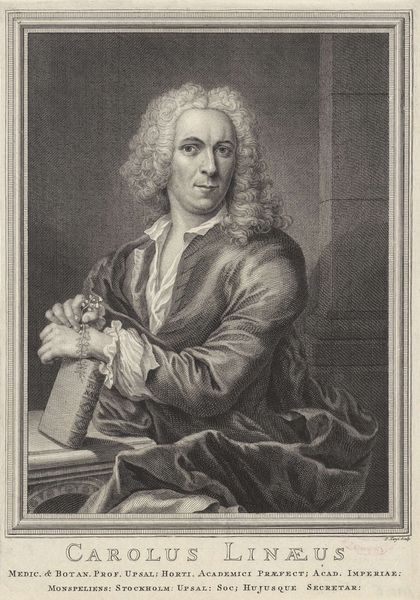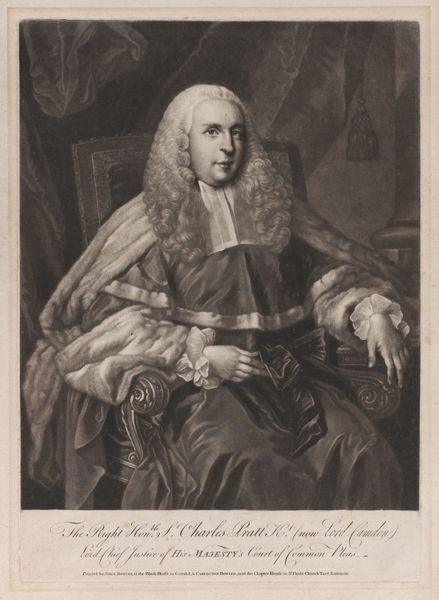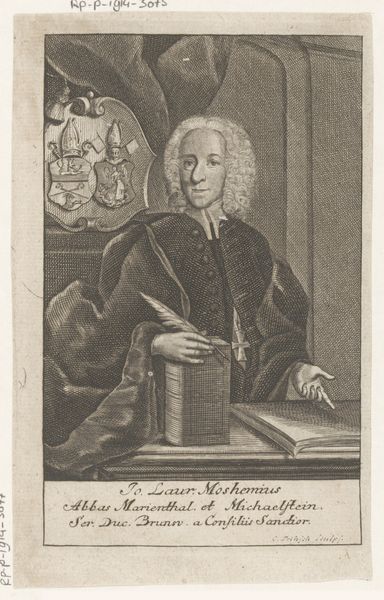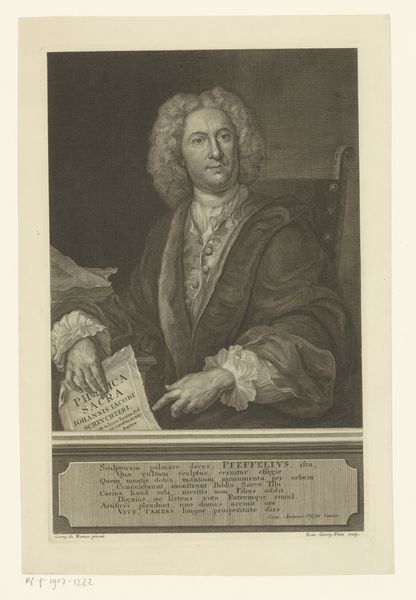
paper, engraving
#
portrait
#
baroque
#
paper
#
history-painting
#
engraving
Dimensions: height 355 mm, width 255 mm
Copyright: Rijks Museum: Open Domain
Editor: Here we have Bernhard Vogel's "Portret van Christoph August Lämmermann" from 1736. It’s an engraving on paper and the detail is striking! The man’s robe seems so opulent. What can you tell me about this piece? Curator: Looking at this engraving, I see a very deliberate engagement with the materials and processes of its production. Consider the choice of engraving itself. It's not simply about replicating an image but about creating reproducible copies. Who was the target audience for such a portrait? And what kind of labor went into producing this? Editor: I guess the choice of engraving makes it easier to share around compared to, say, a painted portrait? Would it have been commissioned, then sold, or gifted as a symbol of status? Curator: Precisely. The Baroque style is characterized by detail. However, consider paper production at the time: linen or cotton rags, a laborious process that created a surprisingly strong and stable surface. The cost would indicate a specific type of patronage. Could it be meant for broader dissemination, perhaps to reinforce Lämmermann’s position and legacy amongst his peers and the community? Editor: That makes sense. So, you’re seeing this portrait as an object designed for reproduction and consumption within a particular social structure. Curator: Exactly. By considering the materials and the means of production, we uncover the social and economic forces at play in its creation and dissemination. Who profited? What was valued? The portrait becomes more than just an image, it’s a record of its own making, of power dynamics in early 18th-century society. Editor: Wow, I never thought about engravings like that, beyond the surface image. I'll definitely be looking at art through a different lens now, considering the paper, the engraving process, everything that contributed to its creation and consumption! Curator: That's wonderful to hear. Every artwork has a material history to uncover and it’s important to engage with them.
Comments
No comments
Be the first to comment and join the conversation on the ultimate creative platform.
